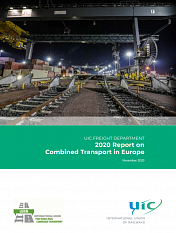In terms of maritime transport, the FEFD accounts for 27% of Russia’s maritime traffic. The ports of the FEFD accounted for 44% of imports in 2023, almost a third (29%) of exports, and a fifth (22%) of coastal transportation.
Container traffic accounts for 11% of the maritime traffic of the FEFD. The increase in containerization will expand access to the world trade market and boost the GVA generated from ports for high-value cargo in containers.
The reorientation of imported goods towards the ports of Magadan, Petropavlovsk-Kamchatsky, Korsakov, and Kholmsk will optimize the workload at these ports, leading to a redistribution of transportation for the delivery of goods to final recipients. This may, in particular, reduce the use of limited cargo capacity at the Eastern landfill (for cargo originating from these ports) and increase use of the Northern Sea Route for coastal shipping.
Year-on-year, loading on railways in the Far East has been increasing: in 2023, growth was 5.6%. Planned investment projects in the Far Eastern federal district also imply steady growth in loading volumes, guaranteeing demand for the Eastern landfill. By 2032, loading could grow to 148 million tons.
The port of Vladivostok continues to lead in container transshipment among Russian ports, with 1.5 million twenty-foot equivalent units (TEU) in 2023. Its integration into the global shipping network is also increasing, with the value of service provided by liner shipping in the first quarter of 2024 being almost twice the global average.
The Far East Federal District ranks third in the country in terms of navigable inland waterway length, but the scale of its use is decreasing each year, primarily focused on northern imports. Dredging activities require additional funding and specialized equipment.
Aviation passenger traffic growth is facilitated by government subsidies for air transportation, including support for low-income groups and the United Far Eastern carrier Aurora.
There are 12 vehicle checkpoints within the territory of the Far Eastern Federal District, of which only one is open 24 hours a day. Transitioning to a 24/7 operation could lead to a twofold increase in traffic across the region (as demonstrated by an experiment conducted at the Zabaikalsk checkpoint).



